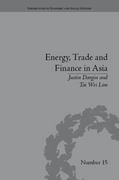When a disequilibrium in the foreign-exchange market between two countries exists,
A) the desired payments between the two countries are not equal.
B) the central bank must intervene to re-establish equilibrium.
C) there are disorderly cross-rates.
D) the actual payments between the two countries are not equal.
E) there are opportunities for profitable arbitrage.
Describe three instruments that are used in the money markets. [6] (1) Define the term equity risk premium. [1] Describe why a change in the equity risk premium will alter the valuation of equities. [3] (iii) Give examples of two events that would alter the equity risk premium. 121 [Total 6] A major institutional investor has decided to make a direct investment in property. List the advantages of large offices relative to other types of property. [5] An institutional investor has conducted an asset-liability modelling exercise, and as a result has decided to invest a proportion of its portfolio in the Global Equity asset category via an external fund manager. List the decisions that need to be made by the institutional investor with regard to this investment in Global Equity (but not about the choice of fund manager). [8] You are an analyst at a firm of global equity investment managers. Your firm's approach to stock picking is based on fundamental share analysis and your day-to-day work involves carrying out this analysis for a particular sector of the global market. (1) List the sources of information you would expect to use in your work. [5] Describe the process you would expect to go through in order to establish whether a stock should or should not be part of your clients' portfolios. [5] One of your stock recommendations held across all your clients' portfolios has seen a substantial fall in its market price over a calendar quarter. Your analysis suggests that the price now represents extremely good value. Based on this view, your recommendation to colleagues would be to substantially increase the allocation to the stock. (iii) Suggest possible reasons for the difference between your and the market's view of the fair price for the stock and outline the risk faced by your firm if your recommendation is made and adopted. [3] You have added to your holding and the price continues to fall. Describe briefly what actions the firm may take when reassessing the positionThe risk department of a large financial institution is developing a Value at Risk ("VaR") model using the Historical simulation method, focusing on the 99% one-day VaR. The financial institution holds a wide range of complex derivatives including equity options, interest rate swaps and swaptions. (1) State the key steps in the Historical simulation method to calculate the 99% one-day VaR. [3] (ii) Explain the weaknesses of the Historical simulation approach for calculating VaR. [3] (iii) List additional analyses, other than VaR metrics, that could help the risk department understand the market risks in the derivative portfolio. [2] The institution's derivative traders are concerned that the first draft of VaR figures overstate the true market risk. In a one-day period they would expect to undertake "management actions" to mitigate falls in asset prices. These management actions include closing out positions, exercising embedded options in the derivatives and executing new hedges. (iv) Propose, with reasons, the items the risk department should consider before allowing for the benefit of management actions in the one-day 99% VaR figure








